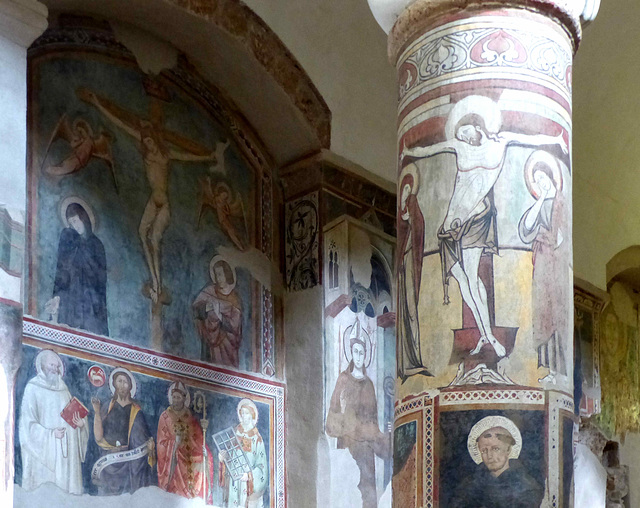Orvieto - San Stefano
Orvieto - San Stefano
Orvieto
Orvieto - Pozzo di S. Patrizio
Orvieto - Pozzo di S. Patrizio
Orvieto - Pozzo di S. Patrizio
Orvieto - Pozzo di S. Patrizio
Orvieto
Acquapendente - Basilica Santo Sepolcro
Acquapendente - Basilica Santo Sepolcro
Acquapendente - Basilica Santo Sepolcro
Abbazia di Sant'Antimo
Abbazia di Sant'Antimo
Abbazia di Sant'Antimo (PiP)
Abbazia di Sant'Antimo
Abbazia di Sant'Antimo
Montesiepi - Eremo di Montesiepi (PiP)
Montesiepi - Abbazia di San Galgano
Montesiepi - Abbazia di San Galgano
Montesiepi - Abbazia di San Galgano
Frosini
Rosia - Pieve di San Giovanni Battista
Rosia - Pieve di San Giovanni Battista
Orvieto - San Giovenale
Orvieto - San Giovenale
Orvieto - Sant'Andrea
Orvieto - Piazza della Repubblica
Orvieto - Duomo di Orvieto
Orvieto - Duomo di Orvieto
Orvieto - Duomo di Orvieto
Orvieto - Duomo di Orvieto
Orvieto - Duomo di Orvieto
Orvieto - Duomo di Orvieto
Orvieto - Duomo di Orvieto
Orvieto - Duomo di Orvieto
Orvieto - Duomo di Orvieto
Orvieto - Duomo di Orvieto
Orvieto - Duomo di Orvieto
Orvieto - Duomo di Orvieto
Orvieto - Duomo di Orvieto
Todi - Santa María de la Consolación
Todi - Santa María de la Consolación
Todi - Chiesa del Santissimo Crocifisso
Todi - Chiesa del Santissimo Crocifisso
Todi - San Fortunato
Location
See also...
Keywords
Authorizations, license
-
Visible by: Everyone -
All rights reserved
-
27 visits
Orvieto - San Giovenale


Orvieto was annexed by Rome in the third century BC. Because of its site on a high, steep bluff, the city was virtually impregnable. After the collapse of the Roman Empire, the episcopal seat was transferred from Bolsena, and the city was held by Goths and by Lombards before its self-governing commune was established in the 10th century. Orvieto's relationship to the papacy has been a close one. By the thirteenth century, three papal palaces had been built.
Orvieto controlled the road between Florence and Rome. It was a large town with a population of about 30,000 at the end of the 13th century. From 1201 Orvieto governed itself through a podestà, who was as often as not the bishop, however, acting in concert with the "captain of the people". In the 13th century feuds divided the city, which was at the apogée of its wealth but found itself often at odds with the papacy. Pope Urban IV stayed at Orvieto from 1262 to 1264.
The city became one of the major cultural centers of its time when Thomas Aquinas taught there. A small university had its origins in a studium generale that was granted to the city by Pope Gregory IX in 1236. The territory of Orvieto was under papal control long before it was officially added to the Papal States and it remained a papal possession until 1860, when it was annexed to unified Italy.
The church was built in 1004, on the site of an early Christian church probably from the 6th century. It was erected with the support of several rich families in the area and was documented as a parish church in 1028. An inscription on the high altar indicates that by 1170 it belonged to the order of monks known as Ordine Guglielmino. When the monks left in c. 1248, it again became a parish church. Between 1739 and 1810 it was owned by the Franciscans. After the Franciscan community was suppressed in 1860, the church was returned to the diocese.
The interior has paintings from the 12th and 13th centuries. Some of them were recently recovered after being hidden by the Baroque remodeling of the interior.
Orvieto controlled the road between Florence and Rome. It was a large town with a population of about 30,000 at the end of the 13th century. From 1201 Orvieto governed itself through a podestà, who was as often as not the bishop, however, acting in concert with the "captain of the people". In the 13th century feuds divided the city, which was at the apogée of its wealth but found itself often at odds with the papacy. Pope Urban IV stayed at Orvieto from 1262 to 1264.
The city became one of the major cultural centers of its time when Thomas Aquinas taught there. A small university had its origins in a studium generale that was granted to the city by Pope Gregory IX in 1236. The territory of Orvieto was under papal control long before it was officially added to the Papal States and it remained a papal possession until 1860, when it was annexed to unified Italy.
The church was built in 1004, on the site of an early Christian church probably from the 6th century. It was erected with the support of several rich families in the area and was documented as a parish church in 1028. An inscription on the high altar indicates that by 1170 it belonged to the order of monks known as Ordine Guglielmino. When the monks left in c. 1248, it again became a parish church. Between 1739 and 1810 it was owned by the Franciscans. After the Franciscan community was suppressed in 1860, the church was returned to the diocese.
The interior has paintings from the 12th and 13th centuries. Some of them were recently recovered after being hidden by the Baroque remodeling of the interior.
Paolo Tanino, Andy Rodker have particularly liked this photo
- Keyboard shortcuts:
Jump to top
RSS feed- Latest comments - Subscribe to the comment feeds of this photo
- ipernity © 2007-2024
- Help & Contact
|
Club news
|
About ipernity
|
History |
ipernity Club & Prices |
Guide of good conduct
Donate | Group guidelines | Privacy policy | Terms of use | Statutes | In memoria -
Facebook
Twitter

Sign-in to write a comment.